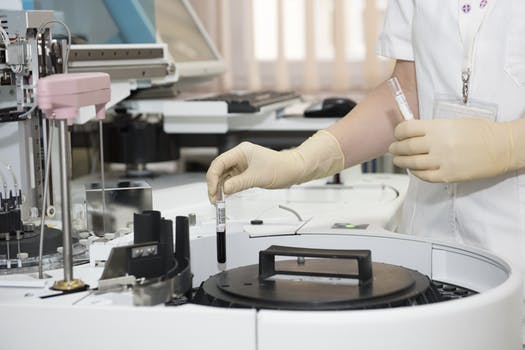
How Long Does Adderall Stay in Your System
What is Adderall
Adderall drug is a combination medication containing four salts of the two enantiomers of amphetamine,a central nervous system (CNS) stimulant of the phenethylamine class which helps increase your ability to pay attention, stay focused on an activity, and control behavioral problems. It may also help you to organize your tasks and improve listening skills.

What is the drug Adderall used for?
Adderall is used to treat attention deficit hyperactivity disorder (ADHD), a condition in which people have a difficult time focusing or paying attention to a single task and act impulsively. The drug exerts its effect by changing the amounts of certain natural substances in the brain(dopamine). Adderall is also used to treat a certain sleeping disorder known as narcolepsy to help you stay awake during the day. Click To Read : How Long Does It Take For Adderall to Kick In
Adderall Addiction Signs and Symptoms
Adderall can be habit forming, if you continually use it over time you will develop tolerance to the drug and become unable to function normally or optimally without it. Adderall works by increasing dopamine levels in the brain. Dopamine is a neurotransmitter that helps control the brain’s reward and pleasure centers. Dopamine also helps regulate movement and emotional responses. Although dopamine occurs naturally, drugs like Adderall produce unnaturally high levels of it. This can cause users to come back for more. No one sets out to become addicted to adderall. Usually, the journey to addiction begins with the intention of increasing productivity on a stressful day at work or to study for an important test. Some people even fake the symptoms of attention deficit hyperactivity disorder (ADHD) in order get a doctors prescription for the drug. This is how many people eventually become addicted to adderall and soon prioritize the drug over everything else including food and family.
The brain of an addicted person is dependent on Adderall to stimulate alertness and productivity. Without Adderall, addicted people often feel tired and mentally foggy. These are symptoms of Adderall withdrawal, a strong sign of an addiction.
Common signs of an Adderall addiction include:
- Needing larger doses to feel the drug’s effects
- Taking the drug despite knowledge of the harm it’s causing
- Not being able to finish work without Adderall
- Spending a lot of money getting the drug
- Being unable to feel alert without the drug
How Does Adderall Affect the Brain?
Adderall works by increasing dopamine levels in your brain. Dopamine is a neurotransmitter that helps control the brain’s reward and pleasure centers and regulate movement and emotional responses. Although dopamine occurs naturally, drugs like adderall produce unnaturally high levels of the chemical. Once introduced into the body, adderall slowly increases the amount of dopamine in the brain, this explains why doctors will prescribe a lower dose to begin, and gradually work upward until the desired effect is achieved. Based upon studies of self-reported illicit stimulant use, 5%–35% of college students use diverted ADHD stimulants, which are primarily used for performance enhancement rather than as recreational drugs. However, high amphetamine doses that are above the therapeutic range can interfere with working memory and other aspects of cognitive control which is potentially dangerous for behavioral health. SEE Adderall and Weed Mix : Facts and Fictions
How is Adderall Misused?
Adderall abuse or misuse refers to when adderall is taken in a manner different than prescribed. This is often how many people eventually become addicted to Adderall and soon prioritize the drug over everything. Because adderall can rapidly increase the amount of dopamine in the brain and create a feeling of euphoria, it has a high addiction potential. As the body system becomes more tolerant to the drug, higher doses are often required in order to continue reaching this potentially dangerous effect of high doses of the drug known as ‘Adderall high’. This creates a cycle of dependence and ultimately addiction to Adderall.
Another way Adderall is often misused by addicts and non addicts is the concurent use of the drug with alcohol which masks certain indicators of alcohol abuse and intoxication that people would otherwise use to slow or stop their consumption of alcohol. If these signs go unnoticed, the user is at risk of continued drinking—potentially leading to alcohol poisoning, coma, or death. An even more dangerous misuse of the drug is found among those snorting adderall. Snorting adderall delivers the drug to the brain more quickly leading to a rapid release of excess dopamine that keep the user returning to the drug even when it is actually causing distress in their lives. A severe adderall overdose arising from this type of use can result in stimulant psychosis that may involve a variety of symptoms, such as delusions and paranoia. See: What Does Adderall Feel Like?
How Long Does Adderall Stay in Your System?
To fully understand how long adderall stay in your system, it is imperative to explain the concept of half-life. Half-life of a drug is the time taken for the human body to eliminate 50% of a drug. The mean elimination half-life for Adderall is 10 hours in adults; 11 hours in adolescents aged 13-17 years and weighing less than or equal to 75 kg/165 lbs; and 9 hours in children aged 6 to 12 years. This implies that an adult who takes 60 mg of Adderall XR will have 30 mg of the drug still in his body after 10 hours. Adderall will be completely eliminated from your system in 3 days. This however depends on several factors.
Testing for Adderall can be done through urine, hair, saliva and blood.
In urine, Adderall can be detected for up to 4 to 7 days.
In hair, Adderall can be detected about a week after use for up to 90 days.
In saliva, Adderall can be detected 20 minutes after use and can be detected for up to 48 hours.
In blood, Adderall can be detected 12 to 24 hours after dosage and can be detected for 24 hours.
Factors that Influence How Long Adderall Stays in Your System
Body composition Effect on Adderall Elimination -The way your body is made up can affect the length of time it takes for your body to eliminate Adderall. Your body fat percentage, height, weight and muscle mass all play a critical role in the time frame taken for Adderall to leave your body. The amphetamine mixed salts in Adderall are known to be hydrophilic( water loving) ,this implies that they will not bind to fat. This explains why someone with low muscle mass and high body fat will probably be clear of Adderall at a much faster rate than someone with high muscle mass and low fat. In general, having more muscle mass means an individual has increased water in the body, and since ingredients of Adderall are hydrophilic, this allows them to circulate the body for longer periods of time without binding.
Food in the System Effect on Adderall Elimination- Food does not necessarily affect how quickly the effects of Adderall kicks in , it can however affect how quickly your body is able to be clear the drug. When food and the drug are both in the digestive system, the body will be working simultaneously to metabolize both the food as well as adderall , implying that it will take a longer time for the system to complete the process for food and the medication.
PH levels Effect on Adderall Elimination – The PH levels of the urinary and gastrointestinal tracts may have an effect on how long Adderall stays in the body. Those with a lower pH level are more likely to get rid of the drug faster since the drug is able to remain in its hydrophilic state. However, if an individual has a high pH level, the kidneys will take longer time to process Adderall for it to be eliminated through the urinary tract. pH level of the urinary and gastrointestinal tracts can be affected by a number of factors such as food and drinks.
SEE How to Spot Fake Adderall (Speed Drug)
Optimal Organ function Effect on Adderall Elimination – Like with almost all medications, principal organs such as the liver and kidney play a critical role in helping the body eliminate by-products of a drug and other unwanted substances. When an organ does not function or does not function as it is supposed to, then this process of eliminating Adderall from the body is slower. For example if a person has kidney disease, the functions of the kidney are not optimal as such, the drug may remain in the system longer periods of time than normal or even be recirculated. This also applies to the liver which plays a major role in metabolizing substances in the body, the process of getting rid of Adderall from the body will be slow if the liver is not functioning as it should be.
Dose Effect on Adderall Elimination– Another major factor that determines how long a medication such as Adderall stay in the body is the dose. Dosage of a medication greatly affect how long it takes to clear the system. Higher doses of Adderall will take a longer time to be eliminated from the body because the liver has to metabolize more of adderall for excretion from the body.
Frequency of Use Effect on Adderall Elimination – A key determinant on how long adderal stay in the human body is the frequency of its use by a person. If you are using Adderall regularly or daily, it will likely take longer periods of time for the system to be clear of it in comparison to someone who has only used the drug a few times.
Types of Drug Tests for Adderall Use
What’s Adderall Use Test?
An Adderall use test is a technical analysis of a biological specimen ( blood, urine, hair, sweat or saliva) from a person in order to determine the presence or absence of adderall or its metabolites. This type of testing is used by law enforcement , employers of labour , sports agency and holding facilities to establish if a person has been using the prescription medication. In addition, if adderall use is suspected among students in an academic institution, testing or screening for the drug is randomly conducted to confirm or dispel suspicion .The types of test for adderall use include:
Urine Testing For Adderall
As with most types of drug testing, Adderall use can show in a urine analysis. This means that the urine is tested for the metabolites that the drug produces, which remain in the body system longer than adderall itself. While most of the drug is eliminated within two to 18 hours of use, urine could test positive for up to three days after a dose of adderall.
Hair Testing For Adderall
Hair testing involves the collection of a hair sample from an individual and testing the hair follicles for metabolites of Adderall. Hair testing often allows for the longest window of time to detect drug use even though it takes just one week after use for metabolites to be present in hair follicles. Adderall can be detected in the hair for up to 90 days.
Saliva Testing For Adderall
This procedure is not very common, but it is occasionally used to detect Adderall use. Once taken from an individual, saliva is taken to the lab and analyzed for metabolites. Saliva testing for adderall is the fastest method for detecting adderall use, as it can show up in saliva as soon as 20 minutes after use. However, it may also remain detectable for up to 48 hours after use.
Blood Testing For Adderall
Drug-testing a blood sample measures whether or not adderall or a metabolite is in the body at a particular time. It offers a short window for detection of the drug, typically only within 24 hours of use. See How Long Does Methadone Stay In Your Urine






